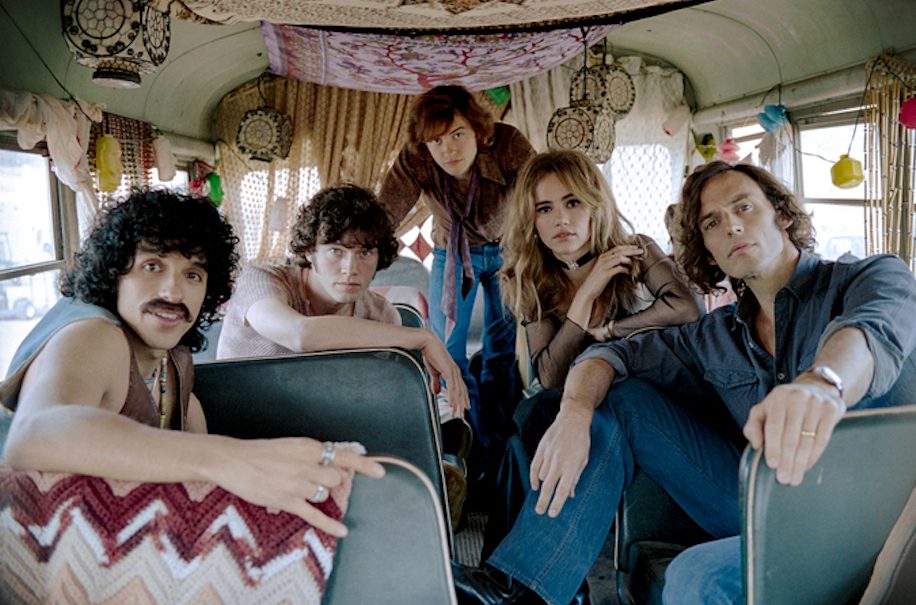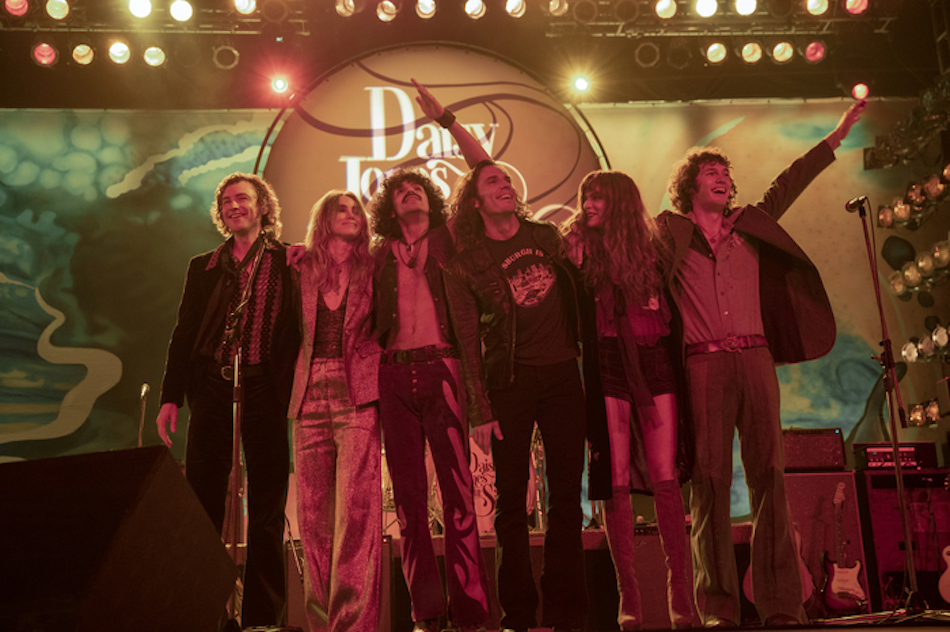Prime Video’s ‘Daisy Jones and the Six’ follows the story of the eponymous band. It traces their journey from the beginning, focusing on the challenges in their path and their personal struggles. The band members, who broke up twenty years ago, sit down to give interviews to talk about what really happened to the band and why they split at the height of their career. The show uses interviews and archival footage to give the audience a sense of what happened back then, while also allowing the characters to reflect on their journey. Because the story is told in a documentary format, it might make you wonder if the show really is a documentary. Here’s what you should know.
Daisy Jones and the Six is a Drama Series
‘Daisy Jones and the Six’ is a drama series that takes the viewers into the heart of the band by presenting the story from the perspective of the band members. It is structured as a documentary, but is completely fictional, having been adapted for the screen from the book of the same name by Taylor Jenkins Reid. The book itself is written in a documentary style and the creators of the show decided to stick to this approach while bringing the story from paper to screen.

Talking about why she chose this format of storytelling, Reid revealed that she was influenced by bands like Fleetwood Mac. When she started researching ‘Daisy Jones and the Six’, she poured through documentaries, especially the episodes of ‘Behind the Music’. She felt that while telling the story of her fictional band, she needed to take the same road, of presenting interviews and showing different sides of a situation from the perspective of different members.
Despite its fictional nature, the author wanted the audience to see it as a story of real people. “I want it to feel like it’s nonfiction. I want you to feel like you’re lost in a story from our culture that you just haven’t absorbed yet. I thought the best way to consume that is by feeling like you’re hearing from a chorus of people,” she said. A more conventional approach would have limited the perspective to the lead characters, but with the interviews, she got other characters just as involved in the story, presenting not only their perspective but also how intrinsically their future was entangled with Daisy Jones and Billy Dunne.
Reid was also conscious of how stories about celebrities are generally brought to the audience, especially when it is about famous women. She wanted to present this story in a way that allows the audience “to understand their public image as well as who they are as human beings.” She added: “In our culture when we write about famous people in-depth, it’s usually in a profile, an oral history, an exposé, or some other form of journalism. So for Daisy Jones, I made use of tropes that we use to learn more about real celebrities, in order to make my fictional celebrities seem more real.”
Reid said that the oral-history format “felt baked into the concept”. “I wanted it to feel real, to have an almost voyeuristic aspect to it where it feels not so much like a novel but like a memoir. And the way to tell that type of story in rock just is as an oral history,” she said. Considering all this, it is clear that choosing to present the story as a documentary makes more impact on the way we see the characters and how the unfolding events influence their future.
Read More: Is Daisy Jones and the Six Based on a True Story? Is It a Real Band?


You must be logged in to post a comment.